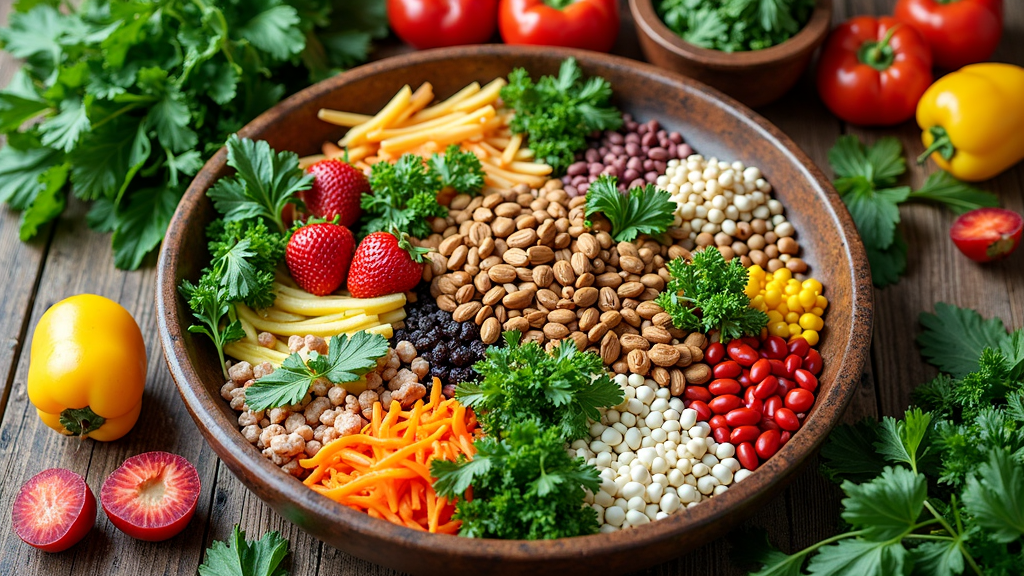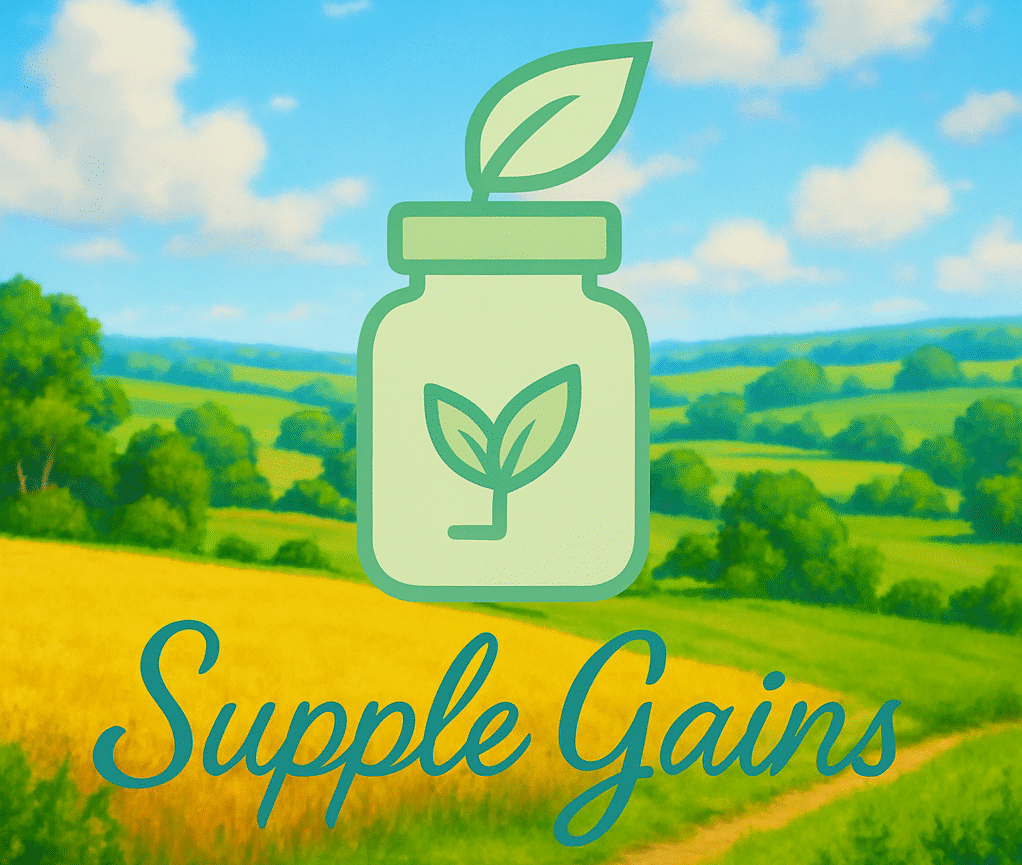People hear a lot about plantbased diets these days, but there’s still a bunch of confusion floating around. Maybe you’ve been told that going plantbased will leave you weak, tired, or missing out on key nutrients. I’ve tried this way of eating myself and have chatted with plenty of folks who worry about things like protein, iron, and vitamin B12. Plantbased diets are becoming more popular every year, and they pack some solid health benefits; so it’s worth clearing up the common myths about nutrient deficiencies.

Common Myths About PlantBased Diets
A lot of what people “know” about eating mostly plants is based on oldschool thinking or worries that don’t really match up with today’s nutrition science. For years, people saw meat and dairy as necessary to get enough protein and other nutrients, so it’s understandable if you’re running into skepticism. But plantbased eating has changed over time, and medical professionals now support it as a healthy option for many folks.
Dietitians agree that most healthy adults can meet their nutritional needs through wellplanned plantbased diets. The key is being aware of what you’re eating, and keeping a little variety in your meals. Below, I’m unpacking the myths I hear most often so you’ve got reliable info the next time someone says, “Don’t you need eggs to stay healthy?”
Understanding PlantBased Diet Basics
Plantbased diets focus on foods that come from plants: veggies, fruits, beans, lentils, nuts, seeds, and whole grains. Some folks cut out all animal products (that’s vegan), while others keep in tiny amounts of dairy or eggs. Even if you just eat plantbased “most of the time,” you’ll find the basic principles still apply.
- Whole Food Choices: These include fresh veggies, beans, nuts, and grains rather than processed options like vegan candy bars.
- Balance: Getting a variety of foods helps cover all your nutritional needs.
- Planning: A bit of meal prep and labelreading goes a long way in making sure you’re fueling your body right.
Top Myths About Nutrient Deficiencies (And the Facts)
I hear a lot of the same worries about nutrients popping up when the topic of plantbased eating comes up. Here’s what’s behind those myths, and practical ways I’ve found to handle them.
- Protein: The big question is always, “Where do you get your protein?” Loads of plant foods offer plenty of protein. Think lentils, chickpeas, beans, tofu, tempeh, quinoa, and even nuts and seeds. You don’t need to combine proteins at every meal to “complete” them; your body is pretty good at getting what it needs across a day’s worth of eating.
- Iron: Some think plant foods don’t have iron, but leafy greens, lentils, beans, and fortified grains have a form of iron your body can use. Eating vitamin Crich foods (like citrus or bell peppers) with meals helps boost iron absorption even more.
- Vitamin B12: B12 is one spot where supplementing makes sense, since it’s mostly found in animal foods. Almost all longterm plantbased eaters take a B12 supplement or choose fortified foods like plant milks and cereals. It’s easy and affordable, based on my experience.
- Calcium: There are plenty of nondairy calcium sources, including fortified plant milks, tofu made with calcium sulfate, almonds, sesame seeds, and leafy greens like kale and bok choy. I find it pretty easy to hit daily targets by swapping in these foods.
- Omega3 Fats: Chia seeds, flaxseeds, hemp seeds, and walnuts give you what you need. Some people add an algaebased supplement for extra insurance, especially folks who don’t eat fish.
Practical Tips to Cover Your Nutrient Bases
Switching to a mostly plantbased diet doesn’t need to be complicated. Here’s how I make sure I’m getting full coverage:
- Eat a Wide Range of Plants: Different colors and types of plants pack different nutrients. The more variety, the better your odds of hitting nutrient goals without much fuss.
- Watch Out for Processed Foods: Plantbased junk food is real! Pizza, snack bars, and chips are tasty but won’t fill your micronutrient gaps. I try to stick with mostly whole foods for meals and treats.
- Supplement Where Needed: B12 is one I always keep an eye on, and depending on bloodwork, some folks might also want to add vitamin D or omega3s, so talking to your doctor or dietitian helps!
- Read Labels on Fortified Foods: Fortified cereals, nondairy milks, and tofu often have a nutrient boost. This is super useful for B12, calcium, and vitamin D.
What To Watch For: RealWorld Challenges
Eating a plantbased diet is straightforward when you’re at home and meal prepping, but I’ve hit some bumps on the road too. Here are a few common challenges and how to smooth them out:
- Dining Out: Some restaurants don’t offer solid plantbased options, so I often check the menu online or ask for creative swaps. Packing snacks helps for long days out.
- Hidden Ingredients: Animal products can show up in bread, soups, or sauces, so asking questions or sticking with simple dishes makes it easier to avoid slipups.
- Family and Friends: Not everyone “gets it.” Bringing a shareable dish to group meals means I know there’s something I’ll enjoy.
Protein Myths
One thing I hear all the time: “Plantbased diets make you proteindeficient.” Honestly, anyone who eats enough calories from a wide range of whole foods is probably getting what they need. Even athletes and weightlifters thrive on lentils, beans, tofu, and seitan. There are tons of highprotein plant foods out there. If you want exact numbers, a typical adult needs about 0.8 grams of protein per kilogram of body weight, which is easy to cover without any meat or dairy.
Iron and Anemia
Iron from plants (called nonheme iron) isn’t absorbed as efficiently as iron from animal sources, but boosting vitamin C alongside ironrich foods really helps. I love adding strawberries or orange slices to spinach salads, or squeezing lemon on lentil soup. If you’re worried or you’ve got a history of low iron, a quick blood test and review from your doctor can help you get on the right track.
B12: The Real Deal
B12 is the one nutrient that’s tricky on a plantbased plan, since it’s not naturally present in plant foods. A cheap supplement or regular servings of fortified foods gets the job done. I keep a B12 spray in my pantry so I don’t forget. If you ever feel super tired or foggy, always mention your diet to your doctor; they can check your B12 levels with a simple blood test.
Calcium And Bone Health
Dairy is not your only calcium option. Cooked kale, broccoli, bok choy, and fortified plant milks are part of my regular shopping list. Most plantbased eaters who add these foods in regularly have no trouble meeting daily calcium needs.
Omega3s
If you’re skipping fish, it’s easy to add chia, flax, hemp, or walnuts to your routine. These give you plenty of ALA (a type of omega3). For folks who want to skip animal sources completely, algaebased omega3 supplements can fill the gap.
Realistic Examples From DayToDay Life
I’ve found that with a little creativity, plantbased eating covers all the nutrition bases and still keeps meals fun. Here are some ways this shows up in the kitchen or out and about:
- Breakfast: Oats with soy milk, berries, chia seeds, and a scoop of almond butter.
- Lunch: Big lentil salad with roasted veggies and leafy greens, plus a squeeze of lemon.
- Snacks: Roasted chickpeas, trail mix, or whole grain toast with peanut butter.
- Dinner: Stirfry with tofu, broccoli, bell peppers, and brown rice, topped with sesame seeds.
For dessert, a quick fruit salad or a baked apple with cinnamon can satisfy your sweet tooth while still fitting into a plantbased menu. If you want to make it even more interesting, try out beanbased brownies or avocado chocolate mousse—proof you can have fun with food and eat nourishing meals.
Frequently Asked Questions
Curious about plantbased eating and nutrients? Here are some questions people ask me a lot:
Question: Can I really get enough protein without eating meat?
Answer: Definitely. Lentils, beans, tofu, tempeh, quinoa, soy milk, nuts, and seeds all pack plenty of plant protein.
Question: Isn’t plantbased iron hard to absorb?
Answer: Nonheme iron can be a bit trickier, but eating it with vitamin Crich foods helps boost absorption a lot.
Question: Do I need to take supplements?
Answer: Most plantbased eaters take a B12 supplement. Some also add vitamin D or omega3s, depending on where they live and what they eat. Getting bloodwork checked now and then is a smart move.
Question: Will my energy levels drop without animal products?
Answer: Not if you eat a balanced, varied plantbased diet and stay on top of B12 and iron needs. Many plantbased eaters feel more energized. If you ever feel low on energy, check your nutrient intake or talk to your doctor.
Final Thoughts On Nourishing PlantBased Diets
Eating plantbased doesn’t mean you’re doomed to miss out on nutrients. Most worries can be handled with a little planning and clever food swaps, and there are plenty of resources and tasty recipes out there. Having tried this myself, I’ve found it’s not just doable, it’s actually pretty tasty and energizing. Whether you go plantbased for health, the planet, or just to mix up your menu, you can feel confident knowing your body’s getting what it needs. Eating more plants can be simple, fun, and just might bring a little nextlevel cool to your kitchen while keeping you strong and healthy.
